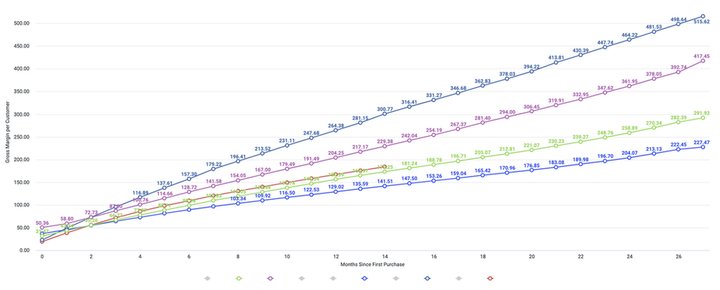Leveraging Data to Improve Profitability in the 2023 Holiday Season
By Dan LeBlanc
Co-Founder & CEO, Daasity
The BFCM-and-holiday digital playbook has long been stagnant for consumer brands: trade margin for volume and cast a wide net for acquisition. Respectively, I see this as an unnecessary profitability tradeoff for some brands and a scattershot strategy for every brand.
This holiday season, I have three recommendations that bring more nuance to these strategies. First, adjust your discounting strategy based on your product offering(s) and customer base. Second, use your own data to direct acquisition that will likely result in higher LTV. Third, use AI tools to optimize your messaging.
The end results: higher profitability and better customers.
When your team has a better focus on the quantitative value of your customers, they will be able to drive even more value from the right customers with optimized messaging.
Your Space and Your Buyer Should Inform Your Discounting Strategy
Based on what I’ve seen from Q3 earnings calls, such as from Target, Nordstrom, and Wal-Mart, lower average order value and mass-market retailers are concerned about Q4 because they believe that consumers are under pressure financially. However, luxury and higher end brands did well, and they do not share these fears.
With this in mind, I’m slicing the market in half—into low-end discretionary, and high-end discretionary brands—and I have recommendations for each segment.
I believe that low-end discretionary brands face the biggest challenges, as customers will spend the least in this category. As a result, I recommend that you plan to deploy your offers well out in front of BFCM, as early as mid-October, to capture market share—before your customers are financially tapped out for the holidays.
However, I see little to no impact for high-end discretionary brands. In fact, I recommend reducing your discount frequency and amount discounted. Offering major discounts lowers perceived value, and the cohort acquired during the holidays may be lower quality, non-repeat buyers.

First-Party Data, Pt.1: Acquire Higher-LTV customers
While there are a number of ways to build a data-driven acquisition strategy, a simple starting point is to identify your best acquisition SKU(s).
Across the board, brands have a certain first-purchase SKU that leads to a dramatically higher LTV. Consider the visualization below, which shows LTV by first-purchase SKU over time:
First-Party Data, Pt. 2: Filter Out Your “One-and-Doners”
Leverage AI to Rapidly Iterate and Same Your Marketing Team Time
On the segmentation side, to ensure that your post-BFCM marketing can be directed toward higher value customers, I recommend filtering out the bargain hunting single purchase customers (one-and-doners).
Using last year’s data, segment out customers who only purchased on or around BFCM and nothing since. Most brands will have this type of segment, and they may even lose money on it, especially during the holidays when a razor-thin margin may turn into a negative margin.
Instead, your major marketing focus should be on your profitable high-value customers, the goal being to retain them through this holiday season and in the years to come.
This should be an annual exercise, in order to continually target customers worth more to your brand.
With a better discount and data strategy in hand, I recommend adding an AI tool to your marketers’ toolbox to optimize messaging. Doing so will reduce hours spent per week writing and A/B testing ad copy, SMS, and emails.
AI will help create rapid iteration cycles of testing and deploying and analyzing. In effect, when your team has a better focus on the quantitative value of your customers, they will be able to drive even more value from the right customers with optimized messaging. Bonus points if you’re using zero-party data collected through quizzes and surveys.
I redacted the SKU names and removed a few of the SKUs from the visualization for clarity, but the top SKU results a nearly 25% higher LTV than the next closest. For some brands, the difference is even higher.
In the context of BFCM, your most valuable first-purchase SKUs can and should be leveraged for acquisition. Beyond the holiday, it may help overall product development and marketing strategies.





need